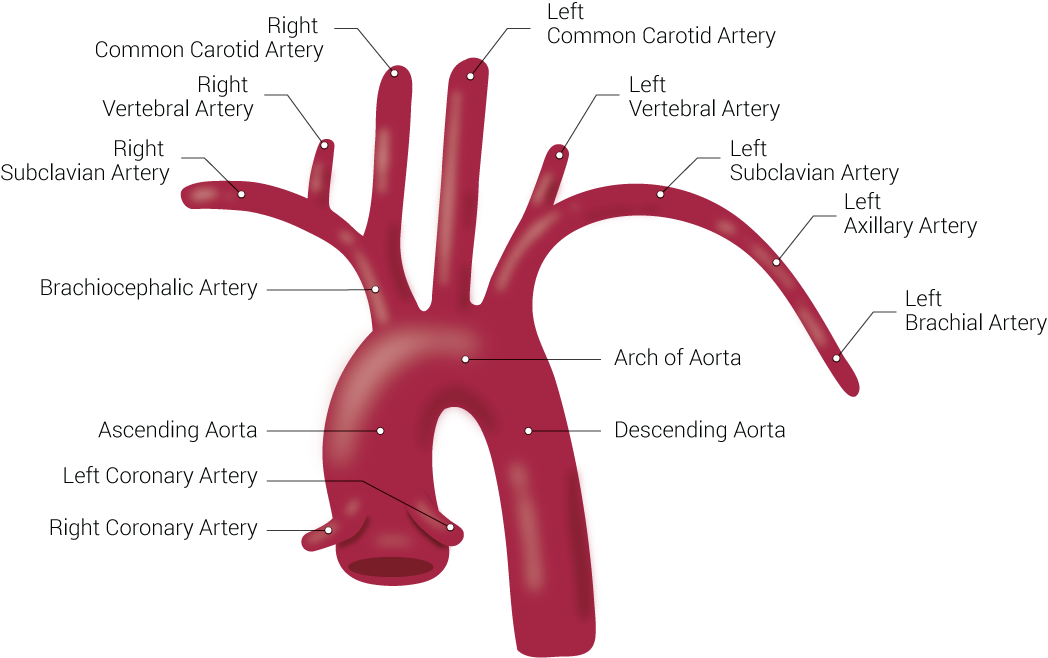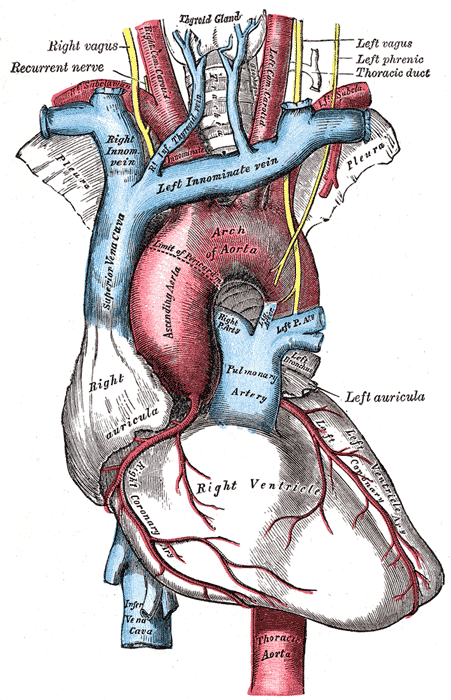[1]
Kau T, Sinzig M, Gasser J, Lesnik G, Rabitsch E, Celedin S, Eicher W, Illiasch H, Hausegger KA. Aortic development and anomalies. Seminars in interventional radiology. 2007 Jun:24(2):141-52. doi: 10.1055/s-2007-980040. Epub
[PubMed PMID: 21326792]
[2]
Dungan DH, Heiserman JE. The carotid artery: embryology, normal anatomy, and physiology. Neuroimaging clinics of North America. 1996 Nov:6(4):789-99
[PubMed PMID: 8824131]
[3]
Bamforth SD, Chaudhry B, Bennett M, Wilson R, Mohun TJ, Van Mierop LH, Henderson DJ, Anderson RH. Clarification of the identity of the mammalian fifth pharyngeal arch artery. Clinical anatomy (New York, N.Y.). 2013 Mar:26(2):173-82. doi: 10.1002/ca.22101. Epub 2012 May 23
[PubMed PMID: 22623372]
[4]
Stout KK, Daniels CJ, Aboulhosn JA, Bozkurt B, Broberg CS, Colman JM, Crumb SR, Dearani JA, Fuller S, Gurvitz M, Khairy P, Landzberg MJ, Saidi A, Valente AM, Van Hare GF. 2018 AHA/ACC Guideline for the Management of Adults With Congenital Heart Disease: A Report of the American College of Cardiology/American Heart Association Task Force on Clinical Practice Guidelines. Circulation. 2019 Apr 2:139(14):e698-e800. doi: 10.1161/CIR.0000000000000603. Epub
[PubMed PMID: 30586767]
Level 1 (high-level) evidence
[5]
Karaosmanoglu AD, Khawaja RD, Onur MR, Kalra MK. CT and MRI of aortic coarctation: pre- and postsurgical findings. AJR. American journal of roentgenology. 2015 Mar:204(3):W224-33. doi: 10.2214/AJR.14.12529. Epub
[PubMed PMID: 25714305]
[6]
Campbell M. Natural history of coarctation of the aorta. British heart journal. 1970 Sep:32(5):633-40
[PubMed PMID: 5470045]
[7]
Torok RD,Campbell MJ,Fleming GA,Hill KD, Coarctation of the aorta: Management from infancy to adulthood. World journal of cardiology. 2015 Nov 26;
[PubMed PMID: 26635924]
[8]
Coady MA, Rizzo JA, Hammond GL, Kopf GS, Elefteriades JA. Surgical intervention criteria for thoracic aortic aneurysms: a study of growth rates and complications. The Annals of thoracic surgery. 1999 Jun:67(6):1922-6; discussion 1953-8
[PubMed PMID: 10391339]
[9]
Coady MA, Rizzo JA, Hammond GL, Mandapati D, Darr U, Kopf GS, Elefteriades JA. What is the appropriate size criterion for resection of thoracic aortic aneurysms? The Journal of thoracic and cardiovascular surgery. 1997 Mar:113(3):476-91; discussion 489-91
[PubMed PMID: 9081092]
[10]
Coady MA, Rizzo JA, Goldstein LJ, Elefteriades JA. Natural history, pathogenesis, and etiology of thoracic aortic aneurysms and dissections. Cardiology clinics. 1999 Nov:17(4):615-35; vii
[PubMed PMID: 10589336]


